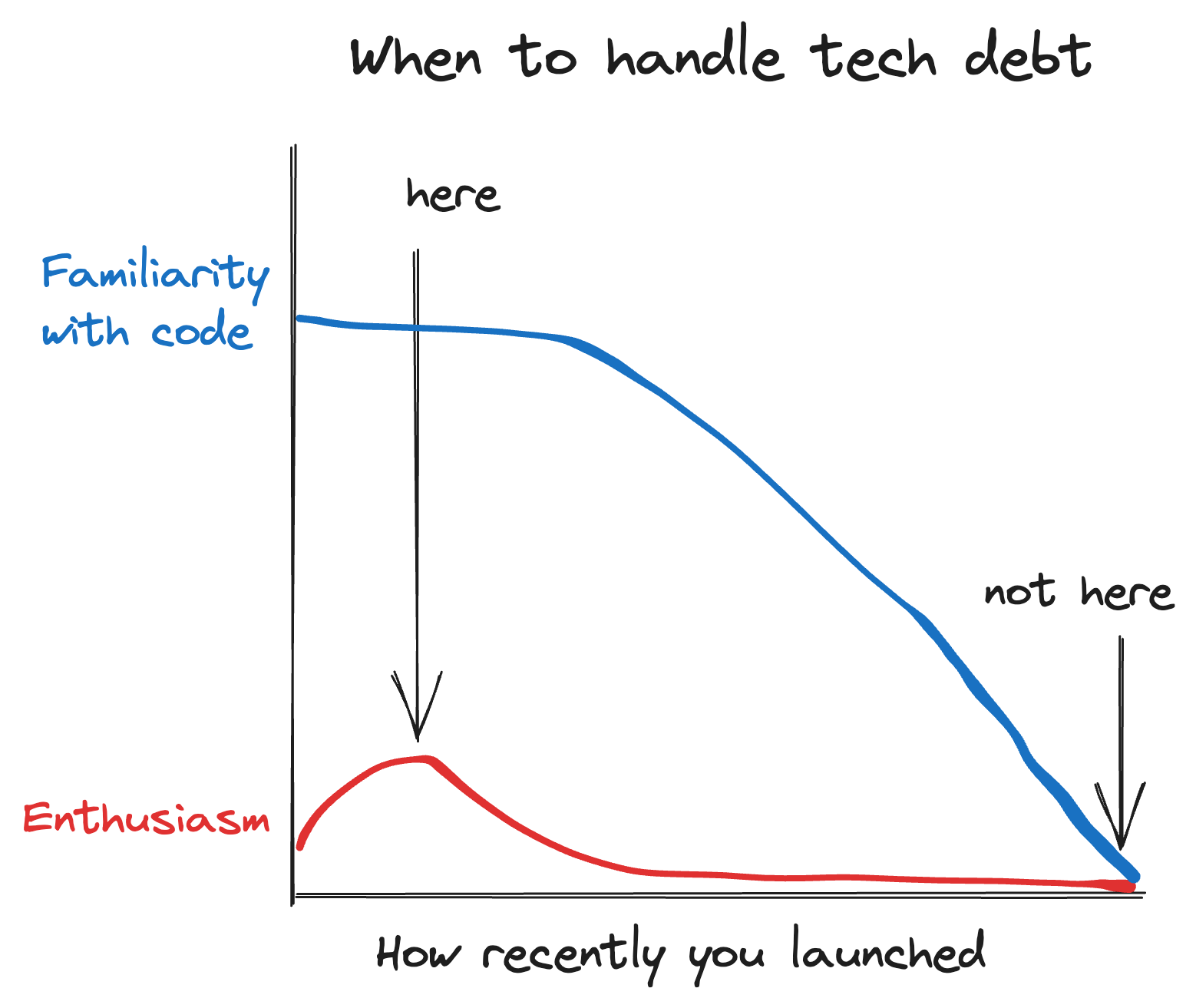When you should handle tech debt
William Zeng - September 12th, 2023
There’s two(three?) solutions to handle tech debt like updating documentation, refactoring code, and making sure comments are up to date.
- handle it before each release
- handle it after each release
- forget about it
Say you have an engineer(named William) working on a full-stack app. You expect William’s new feature to have error logs enabled with detailed messages. It’s not the end of the world if these logs are missing, but it’s really nice to have.
In solution 1, it’s annoying for William to go back and update every possible failure with a detailed log, but all of the work gets done. Users are happy, software was shipped(albeit slowly). This is alright, but bottlenecks engineers.
In solution 2, William is happy, but in practice this degrades to solution 3. He forgot to update the logs. Next time one of your users reports an error, you ping him to fix it. Not great, but not the end of the world.
Proposal: handle tech debt shortly after feature releases

Say William released the feature on Thursday. By next Monday, he’s forgotten exactly what they should be doing, the new week has started, and he’s onto the next feature. He’s swamped with meetings, so he doesn’t want to take time out of the day to write “detailed error logs”.
However, by handling tech debt immediately after release(say Friday afternoon), he can get the best of both worlds.
- He gets to ship fast.
- Users are using the feature, and the urgency is higher.
- The tech debt gets handled.
We’re revisiting how tech debt gets handled at Sweep. We provide a simple flow: you write a github issue describing a code change → you get an automatically generated + validated pull request with code.
It’s tricky to use this flow for large features - will it really save you time?(sometimes yes, sometimes no), so we’re cleaning up the small chores first.
We started Sweep to proactively clean up tech debt, but few engineers sit down and say “i’m in a good mood, let’s spend some time to cleanup the logs”.
A better way is for Sweep to say “you just shipped this feature, great job! Now please review my PR that cleans up what you missed”.
A new way to think about tech debt
We think about handling tech debt with a request/response flow vs publish/subscribe flow.
In the first, you either immediately handle the chores before/after shipping, or you “drop the request” and it’s lost forever.
In the second, you ship first. Then the chore gets pushed to Sweep’s queue, and Sweep comes back to you with a PR.
These tasks aren’t complex, and that makes them:
- Easily addressable by AI. Sweep validates code using your own linters and tests, along with a quick human review.
- Not enjoyable for programmers. I’m personally not thrilled to sit down and make sure the logs are clear.
Can AI help?
There’s a general sense among engineers of “I know AI can speed me up, but I’m not sure exactly where in the flow that is”. Some concerns are whether:
- AI can catch the errors
- Sweep/AI copilots can actually fix the code
- you should just go with solution 1 and handle it immediately (YMMV)
If you'd like to watch us solve the first two, come check out Sweep: https://github.com/sweepai/sweep (opens in a new tab)